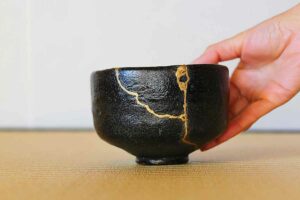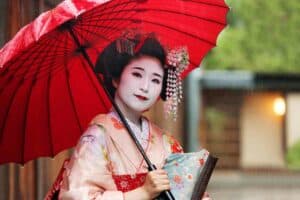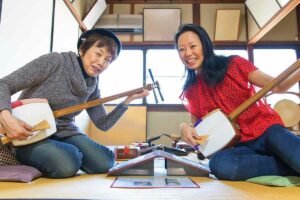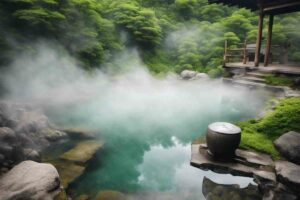With 55 active volcanoes, Japan is an epicenter of volcanic activity.
But one of the great benefits of so much geothermal activity has been the abundance of mineral-rich hot springs throughout the country that supply the nation’s network of all-natural hot spring baths (onsens) where folk of all ages can relax.
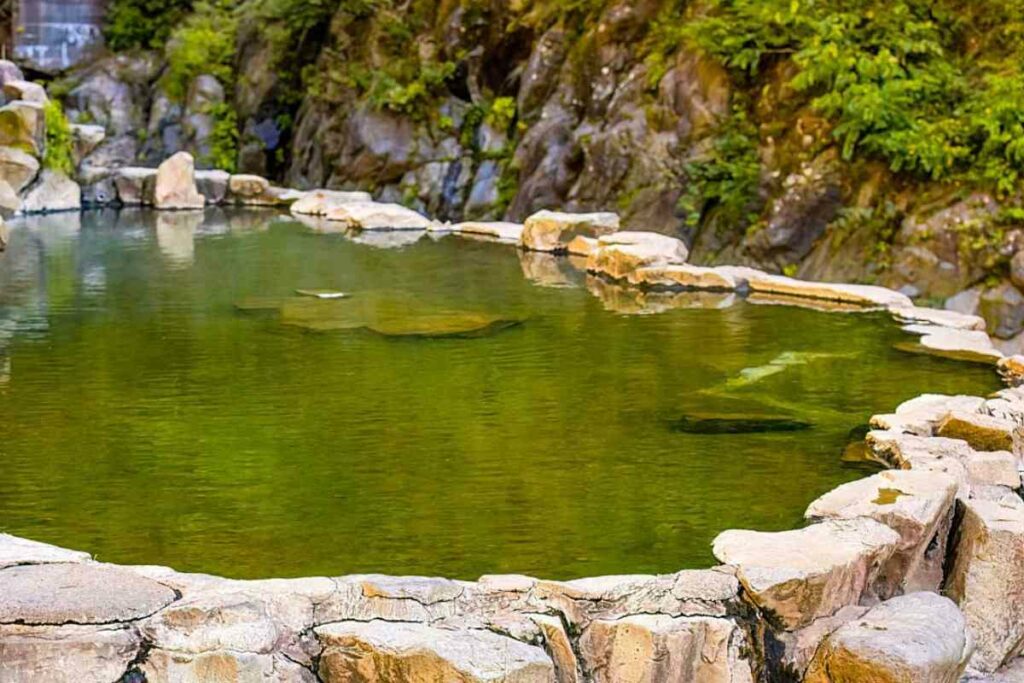
But in many onsens, there is a little-known second cold-water bath called the Mizuburo.
If, like me, you didn’t know that cold water immersion was a thing in Japan, this short guide explains the benefits, and risks of a plunge in a Mizuburo.
Table of Contents
What Is a Mizuburo?
Mizuburo (水風呂), or mizo-buro, or mizoboro is a cold bath that is found in an onsen.
It is usually located directly next to a main bath or sento for immediate cold water immersion after a hot spring or sauna.
The Mizuburo is a cold plunge that immediately shocks and enlivens the senses. If a cold bath is not available, onsen users usually take a cold shower which offers similar health benefits to those shared below.
Mizuburo means ‘cold bath’
Like many cultures around the world, the Japanese relish the contrast between the intense heat of a sauna or onsen and the chilly shock of cold water.
For many of us, the idea of plunging into ice-cold water is the stuff of horror films, but the Japanese, like the Scandinavians and Yakutians, have been doing this for hundreds if not thousands of years and it is expected as part of a routine visit to a local onsen or sento.
Is Mizuburo the Same as Misogi?
A Mizoburo is not the same as a Misogi, but both involve sudden exposure to cold water. Cold water plunges and ritual purification can be traced back to the ritual purification practices of Misogi (禊).
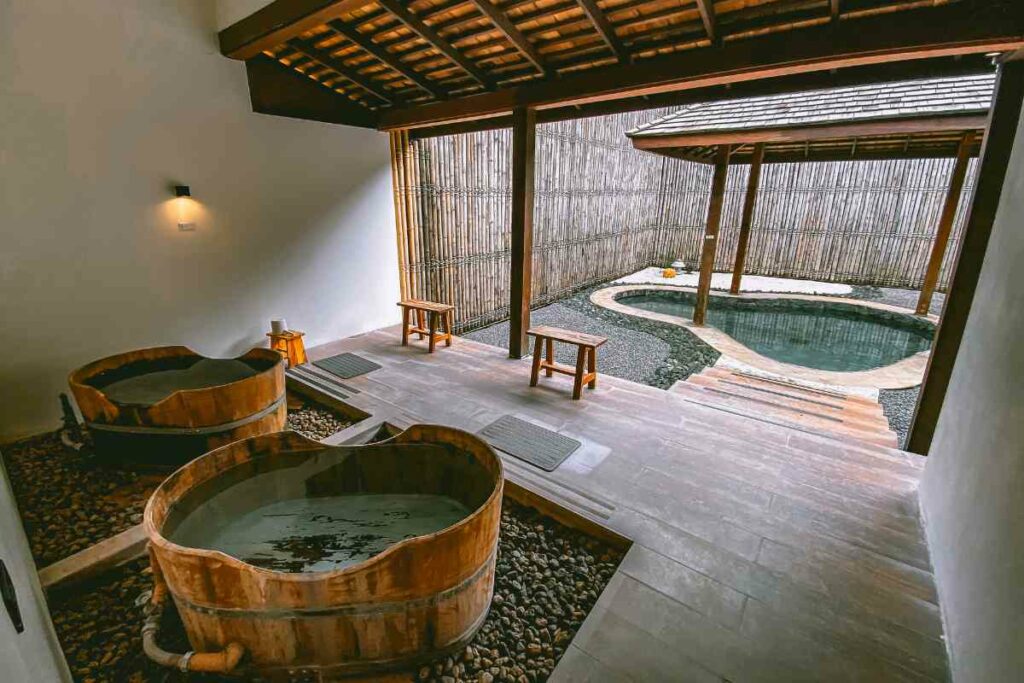
Adherents of Japan’s Shinto religion undertake all sorts of extreme afflicting challenges and acts of endurance for the cleansing and purifying effects.
One particular aspect of Misogi is cold water immersion which is especially esteemed.
The Japanese practice of cold water Misogi involves acts like:
- Plunging into an ice bath
- Standing in the icy winter sea and letting the waves wash over you
- Standing under a waterfall
- Being doused with ice water
Misogi is often performed at the start of the New Year and at various seasonal events and festivals.
Adherents will take flights or travel miles to the special natural sites for this ritual. (Ensure you book your flight well in advance through expedia.com)
Cold exposure is extreme and sometimes dangerous. Misogi has started to be practiced outside of Japan in relation to martial arts and as part of the mindset/motivation industry.
It is now the type of thing you’ll hear David Goggins or Joe Rogan talk about as a key to building character and achieving success.
The Misogi philosophy has been easy to adopt overseas because so many cultures practice cold water plunges.
Mizuburo is non-obligatory and far more easygoing than Misogi.
In fact, many Japanese will bypass the cold dip and simply sit outside after leaving an onsen or sauna to let their bodies adjust to the temperature contrast naturally.
You may also like 📖
The Benefits of Using a Mizuburo
There are some benefits to shocking yourself with an icy plunge after steaming away in the onsen or sauna.
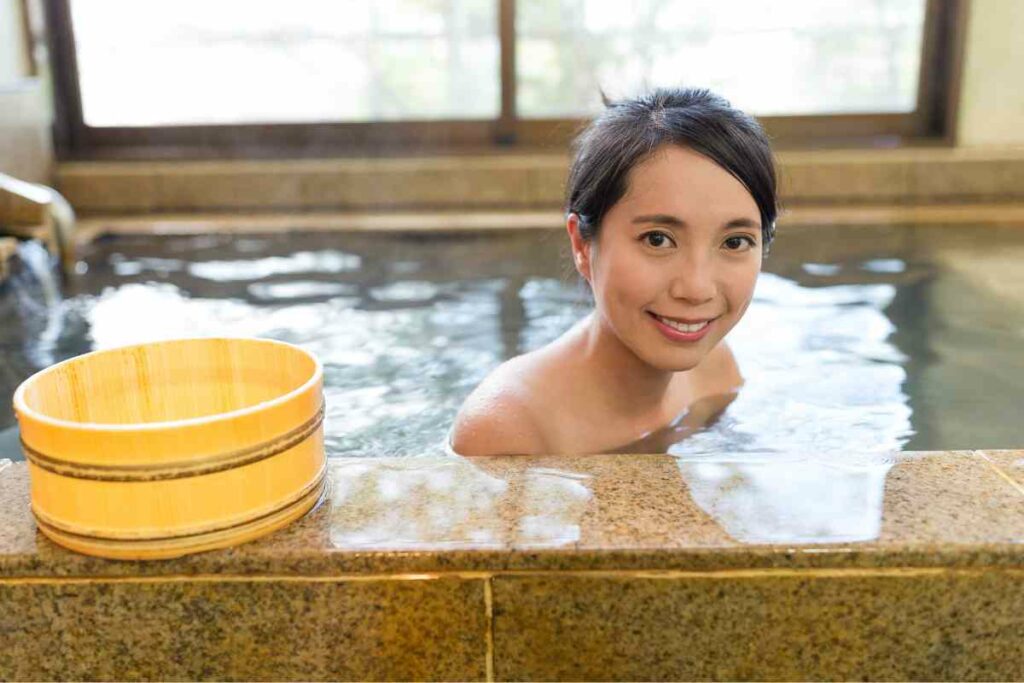
Die-hard Mizuburo users will point to the following health benefits of a cold dip:
Improvements in cardiovascular health
Clinical studies have been able to demonstrate a significant circulatory boost from regular immersion in cold water.
Even heart disease patients can benefit from cold water bathing if they become acclimatized. Other positive effects include lowering blood pressure and improving cholesterol levels.
Musculoskeletal benefits
The cooling waters of the Mizuburo can bring relief to people suffering from arthritis and other musculoskeletal disorders. Joint swelling, pain, and stiffness are eased.
Immune system benefits
There is anecdotal evidence that immersion in the cold waters of a Mizuburo helps enthusiasts fight off colds and other upper respiratory tract infections.
Scientists have identified changes in the level and type of immune cells in the blood, in response to cold water exposure.
Other positive effects of the Mizuburo
- Allergic and inflammatory skin conditions such as eczema and psoriasis are calmed
- Improvement in levels of insulin, cortisol, and Thyroid Stimulating Hormone
- A mental health boost and sense of wellbeing
How to use a Mizuburo
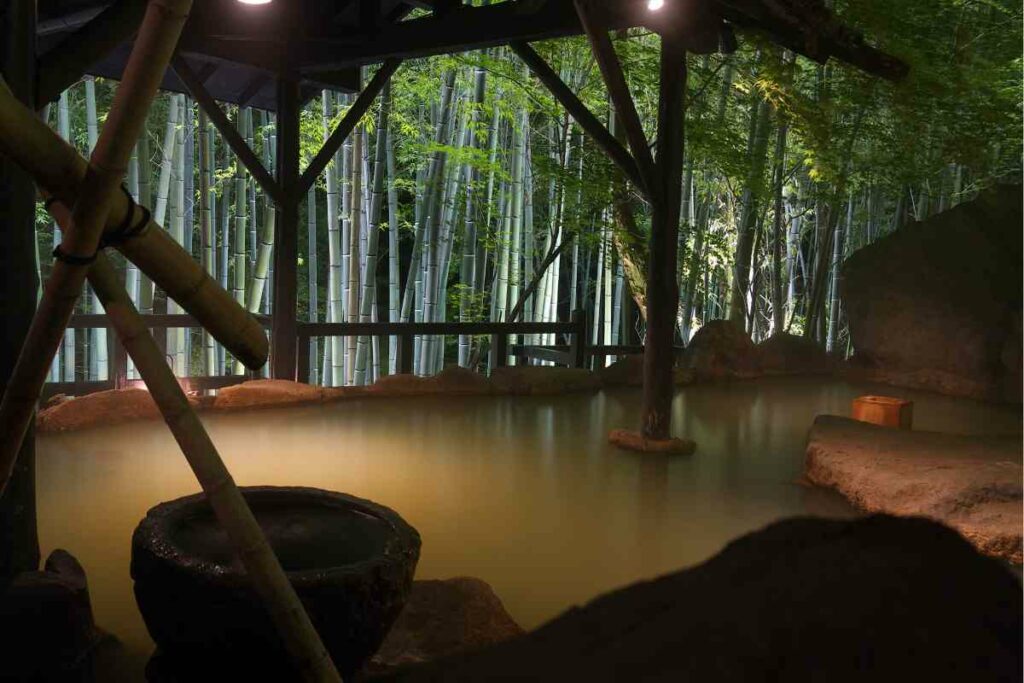
Using the Mizuburo is a routine part of visiting an onsen or sento.
Step 1: Wash your body
Your piping hot soak in the hot spring bath is always preceded by a thorough wash with soap and water.
Step 2: Enter the onsen
After cleaning, you can enter the onsen naked or cover your modesty with a towel. The hot water of an onsen is just as potentially dangerous as the cold water of a Mizuburo.
Ideally, you should spend no more than 40 minutes in the hot water. Alternatively, if you are using a sauna, cover yourself and spend a similar amount of time.
Step 3: Enter the Mizoburo
Once you climb out of the onsen, immediately plunge into the Mizoburo, while your body is hot.
The cold water will close all of the pores that were opened by the onsen and stimulate your circulatory system. Three to five minutes is more than enough!
What out for these Mizuburo risks
Cold water carries big risks, especially for the uninitiated.
In the hubristic joy of an onsen visit a sudden plunge into icy water could cause serious shock or even death.
Risks of an over-enthusiastic plunge in a Mizoburo or as part of a Misogi challenge includes:
- Incapacitation with loss of function in the arms and legs
- Hypothermia
- Cold Shock the sudden temperature change associated with cold water leads to gasping underwater which causes instant drowning
- A sudden drop in blood pressure due to circulatory collapse
If you are new to onsens and jumping in a mizuburo for the first time, absolutely make sure, someone knows you are going to do this and that your travel insurance is up to date with full cover!
Ideally, there should be someone present as you take the plunge so you can be retrieved immediately if things go wrong.
Take a quick look – 10 Best Onsen Destinations In Japan
Prepare safely for Mizuburo immersion
Cold water immersion sounds like a good idea, but if you don’t acclimatize yourself, you are likely to be harmed.
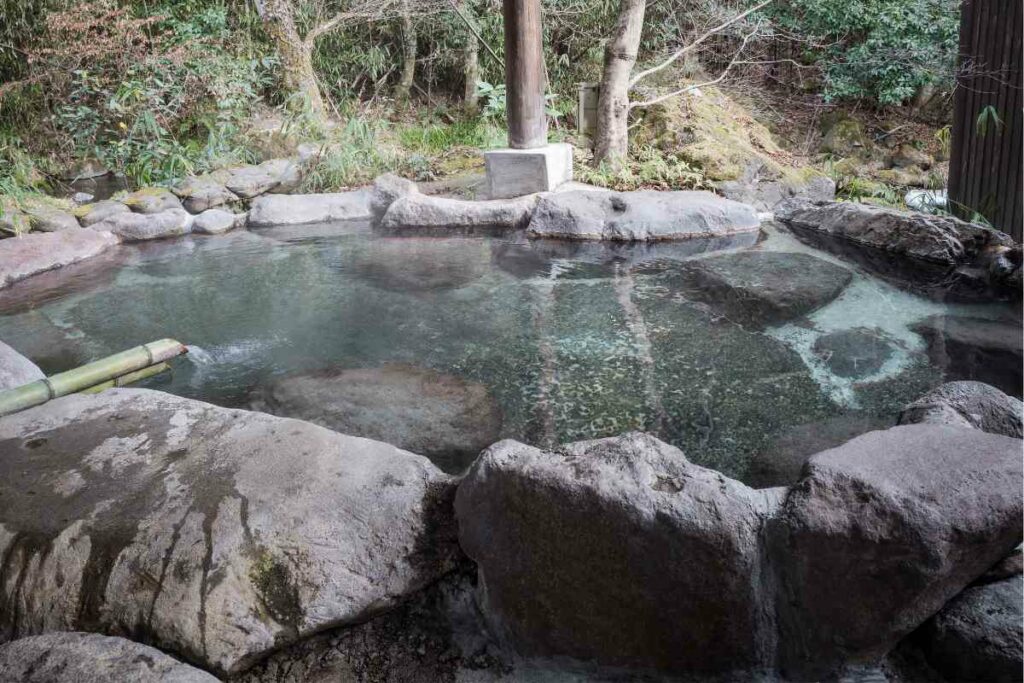
Follow these simple steps to prepare yourself for safe cold water immersion in a Mizuburo:
- Splash cold water on yourself
- Take a cold shower
- Gradually increase the amount of time you spend in contact with cold water
- Take a short plunge
- Gradually increase the time you spend in the cold water bath as you tolerate the cold better
Rounding Up
Cold water immersion is embraced by the Japanese people due to its recognized health benefits.
You’ll have plenty of opportunity to cool off from a boiling hot onsen in Mizuburo baths across Japan. Just remember that you need to be used to the shock of cold water before you take the plunge.
- Japanese Wedding Traditions (Venue, Dress & Food)
- Kintsugi: Perfectly Imperfect Ceramic Art (with 8 Examples)
- 5 Best Japanese Makeup Brushes for a Flawless Finish
- Maiko Vs Geisha Compared: What Are the Differences?
- Japanese String Instruments (9 Famous Ones)
- Best Onsen Destinations In Japan (10 Top Locations)


